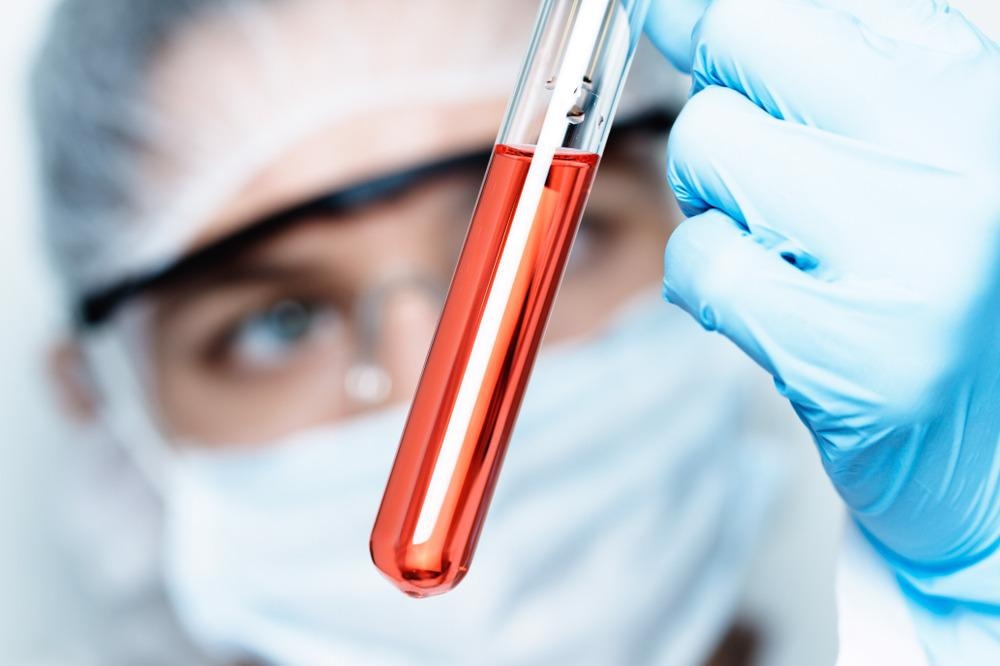The photocatalytic deterioration of a common fabric azo dye utilizing nanoparticles was examined in a recent study published in the journal Materials Today: Proceedings.

Study: Improvement in photocatalytic activity of titanium dioxide nanoparticles through doping and calcination for textile wastewater treatment under visible light. Image Credit: NatalieIme/Shutterstock.com
Here, TiO2 nanoparticles (NPs) loaded with zinc nitrate were synthesized using the sol–gel process and calcinated at elevated temperatures, resulting in the development of heterogeneous phases and increased photocatalysis by the NPs under visible light.
Advanced Oxidation Processes for Treatment of Dye-Containing Effluents
Several emerging nations significantly depend on the textiles industry to fuel their economic growth.
To achieve color requirements, reactive and azo dyes that are can easily dissolve in water are used. As a consequence, around 10–20% of the pigments used are discarded into water sources as pollutants.
Fabric dyes deteriorate bodies of water by raising biological and chemical oxygen requirements, hampering photosynthesis, inhibiting the growth of plants, and infiltrating the food chain. Pollution can also cause recalcitrant behavior and bioaccumulation, and possibly leading to highly toxic, carcinogenic, and mutagenic levels.
To minimize harmful impacts on the ecosystem, human and animal health, and fresh-water reserves, dye-carrying effluents must be adequately treated utilizing environmentally friendly technology.
Advanced oxidation processes (AOPs) have proved to be some of the most effective ways for the treatment of dye-carrying effluents.
Heterogenized photocatalysis is a highly interesting AOPs for the treatment of dyes as well as other organic substances due to its environmentally friendly qualities and minimal power and raw ingredient requirements.
Why Use Titanium Dioxide?
Titanium dioxide (TiO2) is the preferred semiconducting substance for photocatalysis-based purification of organic compounds owing to its chemical stability, inexpensive properties, non-toxic nature, and exceptional photocatalytic capabilities.
TiO2 NPs are only functional when subjected to ultraviolet irradiation since they are unable to absorb light with wavelengths higher than 398 nm.
Commercially accessible UV lamps, on the other hand, are expensive and demand a lot of power to be operated regularly.
Photocatalytic materials with high visible spectrum absorbance must be produced to best utilize the abundant resource that is sunlight or irradiation from artificial sources in photocatalysis.
Choosing the Appropriate Dopant for Titanium Dioxide
To achieve visible spectrum absorption, transition metal loading of titanium dioxide has been investigated. By exposing TiO2 to hydrogen peroxide or chelating agents, just a handful of the photocatalysis processes would progress in visible light conditions.
Photo-absorption of nitrogen-doped TiO2 occurs at wavelengths of 400 nm or higher. Sulfur-loaded TiO2 complex exhibited complete absorbance under visible light irradiation and strong action to break down aqueous-phase mixtures of methylene blue under visible light irradiation at wavelengths of 440 nm or higher.
The nitrogen-loaded TiO2 demonstrated superior photocatalytic activity in simulated sunlight, with a 100 percent reduction of Flumequine, a common water contaminant, in four hours of irradiation.
TiO2 loaded with nitrogen also displayed photocatalysis activity for 2-propanol breakdown in aqueous mixture in visible light irradiation. In the visible light range, absorption was greater.
In this study, methyl red dye was decomposed utilizing photocatalytic TiO2 NPs doped with zinc nitrate in visible light, and kinetic investigations were carried out.
The photocatalyst chosen for azo dye deterioration was calcinated at 800 °C, resulting in the development of blended phases of TiO2 in the photocatalytic nanoparticles. The influence of blended phases on photodeterioration was investigated.
Important Findings of the Study
The researchers evaluated the breakdown of model fabric effluent carrying azo dye methyl red using TiO2 NPs tailored to boost visible light photocatalysis.
It was discovered that the change of anatase to rutile phase in TiO2 happens at high temperatures and that the calcination temperature influences photocatalysis.
Anatase and rutile phase combinations may also improve photocatalytic activity. The analysis corroborated these findings, and it was discovered that a peak degradation of 85 percent was attained for 0.2 g of photocatalyst in three hours.
It was determined that the developed photocatalyst is reusable and retains its photocatalytic function. According to the kinetic investigation, the degeneration followed pseudo second order kinetics.
The results reveal that Zn(NO3)2 doped TiO2 can effectively breakdown azo dye under visible light irradiation, making it cost-efficient owing to the use of visible light.
Reference
Rao, P. A., & Satyanarayana, S. (2022). Improvement in photocatalytic activity of titanium dioxide nanoparticles through doping and calcination for textile wastewater treatment under visible light. Materials Today: Proceedings. Available at: https://www.sciencedirect.com/science/article/pii/S2214785322008306?via%3Dihub.
Disclaimer: The views expressed here are those of the author expressed in their private capacity and do not necessarily represent the views of AZoM.com Limited T/A AZoNetwork the owner and operator of this website. This disclaimer forms part of the Terms and conditions of use of this website.